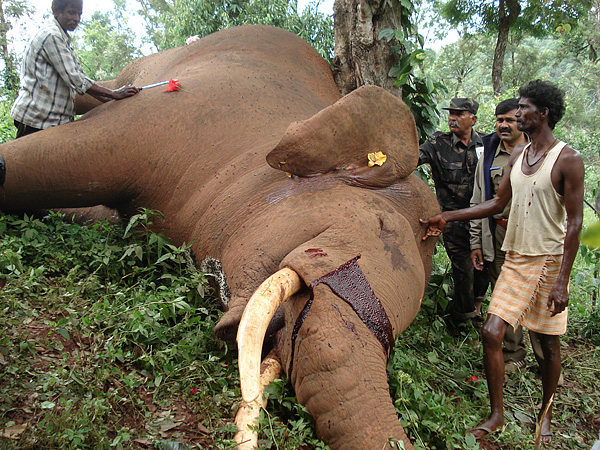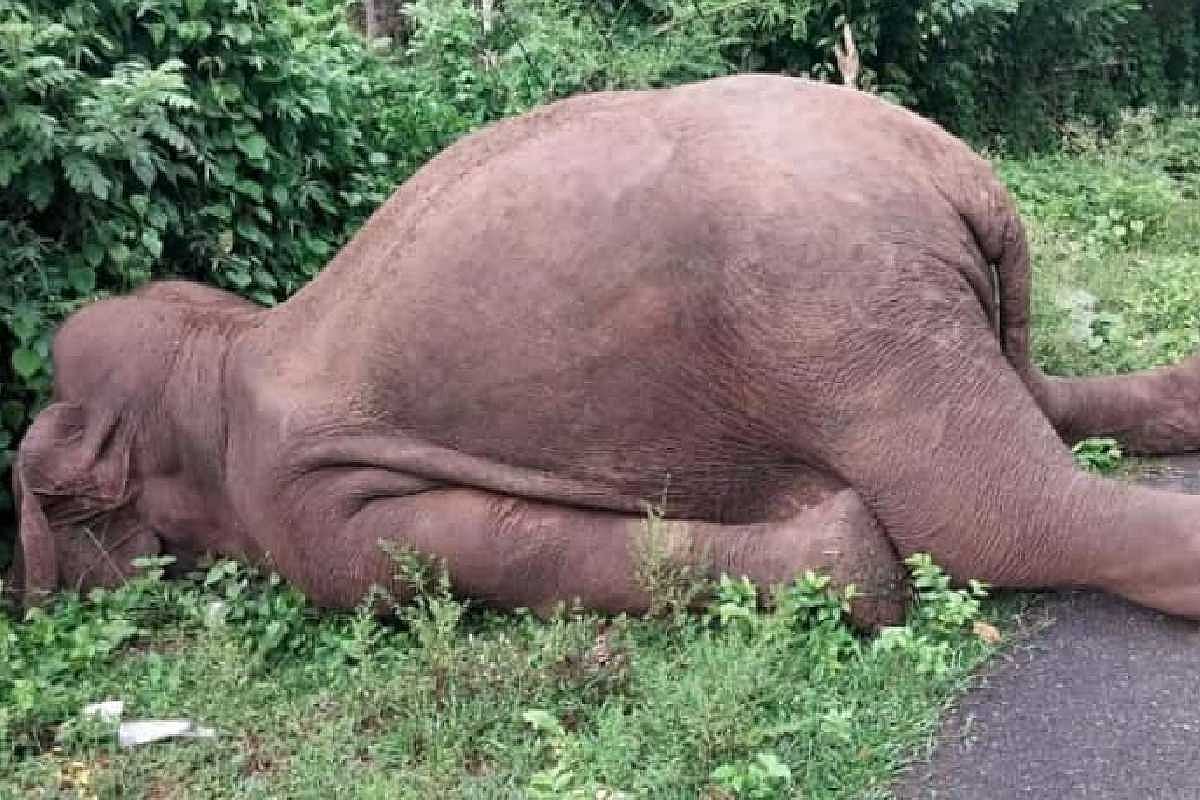South Karnataka has been rocked by a spate of tragic incidents involving wildlife, just as the state observes Wildlife Week. Reports confirm that multiple tigers were poisoned and several elephants electrocuted in different forest belts, underscoring the intensifying human-animal conflict in the region. Forest officials have expressed deep concern over these deliberate acts, which not only threaten endangered species but also reflect growing friction between local communities and wildlife. The incidents occurred in districts including Chamarajanagar, Kodagu, and Mysuru, where human settlements increasingly encroach upon animal habitats.
The poisoned tigers, found near forest fringes, were identified as part of ongoing conservation programs aimed at maintaining tiger populations in Karnataka. Post-mortem examinations revealed traces of highly toxic substances, indicating intentional poisoning. Similarly, elephants electrocuted along power lines and illegally set traps were discovered near plantations and villages. Wildlife experts warn that such fatalities destabilize fragile ecosystems, disrupt predator-prey dynamics, and could jeopardize the state’s broader conservation efforts. Local forest officials have called for immediate investigations and tighter enforcement of wildlife protection laws.
Environmentalists have emphasized that these incidents are symptomatic of broader conflicts caused by expanding agriculture, urbanization, and unplanned development near forested areas. Farmers and villagers, struggling with crop damage and property loss, sometimes resort to dangerous measures to protect livelihoods. Experts argue that long-term solutions require integrated strategies combining community awareness, compensation schemes, and preventive measures such as trenches, solar fencing, and controlled electric lines. Wildlife Week, which is meant to celebrate biodiversity and conservation achievements, has now taken on a more urgent tone, highlighting the human cost of neglecting ecological balance.
Forest officials have also emphasized the importance of maintaining natural buffers between human settlements and wildlife habitats. Planting native vegetation and creating water sources within forests can reduce the need for animals to venture into villages, thereby minimizing conflict. Such ecological measures, combined with community awareness, are seen as sustainable long-term solutions.
Veterinarians and wildlife rescue teams have been placed on high alert to respond to any injured animals. Mobile units equipped with medicines, tranquilizers, and transport facilities are now stationed near high-risk zones. Rapid response is expected to improve survival rates and reduce suffering among affected wildlife.
Local schools and community centers are being used to educate children and residents about wildlife behavior, safety measures, and the importance of biodiversity. By instilling awareness from a young age, authorities hope to cultivate a culture of respect and coexistence with the natural environment.
Media coverage of the incidents has played a pivotal role in raising public awareness. Reports, videos, and expert commentary have highlighted the urgent need for stricter monitoring and proactive conflict mitigation strategies. Public pressure is pushing authorities to implement reforms more swiftly and transparently.
As Wildlife Week continues, the focus in South Karnataka has shifted from celebration to urgent action. The combined efforts of forest officials, NGOs, local communities, and government agencies aim to prevent further tragedies, protect endangered species, and foster harmonious coexistence between humans and wildlife.
Forest Officials Call for Immediate Action
Karnataka Forest Department officials have intensified patrolling in affected districts and deployed rapid response teams to monitor wildlife movement. They stressed the importance of preventing further casualties and ensuring the safety of both humans and animals.
Authorities are also coordinating with local police to investigate suspected cases of intentional poisoning and electrocution, aiming to hold responsible parties accountable under the Wildlife Protection Act.
The recent incidents of poisoned tigers and electrocuted elephants in South Karnataka have sent shockwaves through conservation circles. Wildlife experts describe the events as alarming setbacks for biodiversity in the state. Karnataka, home to several tiger reserves and elephant corridors, has long been a model for wildlife conservation in India. However, growing human encroachment, unsustainable agricultural practices, and improper power line management have increasingly endangered animal populations, creating a tense environment along forest fringes.
In Chamarajanagar, forest officials discovered a tiger carcass near a plantation boundary, showing clear signs of poisoning. Preliminary investigations suggest the use of commercial pesticides, which are both highly lethal and illegal when deployed against wildlife. The incident highlights the delicate balance between human agricultural needs and the survival of apex predators. Authorities have initiated an extensive probe to identify individuals responsible for this deliberate act, emphasizing that such crimes carry severe penalties under Indian wildlife law.
Elephant fatalities due to electrocution have also raised serious concerns. In several villages bordering forest areas, elephants were found dead after coming into contact with illegally electrified fences meant to protect crops. Experts note that elephants, being migratory, often traverse human settlements in search of food and water. Without proper awareness and preventive infrastructure, human-wildlife conflicts are bound to escalate, putting both lives at risk.
The Karnataka Forest Department has intensified surveillance in hotspot areas. Drones, camera traps, and night patrolling teams have been deployed to monitor animal movement and deter potential poachers or villagers attempting dangerous interventions. Forest officers have also begun liaising with electricity boards to ensure that all fencing and power lines along forest fringes comply with safety standards for wildlife.
Local villagers have been both victims and inadvertent participants in these conflicts. Crop damage by elephants and tigers entering human settlements has historically led to retaliatory measures. While villagers face economic losses, authorities insist that illegal actions, such as poisoning or electrifying fields, cannot be condoned. Compensation schemes for crop loss and property damage are being reinforced to reduce incentives for such retaliation.
Environmentalists have called for urgent policy-level interventions. They recommend stricter enforcement of wildlife protection laws, community sensitization programs, and enhanced financial support for conflict mitigation measures. Experts also highlight the need for ecological corridors to ensure safe movement of animals between forest patches without encountering human settlements.

Several NGOs have stepped in to support the affected communities and forest officials. Initiatives include awareness campaigns, installation of non-lethal deterrents, and training on coexistence strategies. By bridging the gap between human needs and wildlife conservation, these programs aim to reduce fatalities and foster long-term sustainability.
Forest officials have also launched emergency response protocols for wildlife distress. Poison control measures, rapid medical intervention for injured animals, and coordinated rescue efforts are being strengthened. These steps are crucial to improving survival rates among affected wildlife and maintaining ecological stability in the region.
Researchers studying tiger and elephant populations warn that repeated fatalities could disrupt breeding patterns and social structures within herds. Tigers, being territorial apex predators, are especially vulnerable to sudden population declines. Similarly, elephant herds rely on established migratory paths, and the loss of even a few key members can have cascading effects on herd dynamics and regional biodiversity.
The incidents during Wildlife Week have sparked public debate about the effectiveness of existing conservation frameworks. Citizens, wildlife enthusiasts, and local communities are questioning why preventive measures are not uniformly implemented across sensitive areas. Social media campaigns have also amplified calls for stricter oversight, highlighting the importance of vigilance in protecting endangered species.
Education and awareness campaigns are being intensified to teach villagers about safe coexistence practices. Demonstrations on fencing alternatives, crop selection, and community monitoring programs aim to reduce human-wildlife friction. Officials stress that knowledge dissemination is as critical as enforcement in achieving lasting harmony between humans and animals.
Authorities are also reviewing compensation mechanisms to make them more accessible and timely. Delayed payouts in past incidents have often fueled resentment among villagers, leading to retaliatory actions. The government aims to streamline claims processing and ensure swift disbursal to prevent further conflict.
Technology is being leveraged to predict potential conflict zones. GIS mapping, animal movement tracking, and predictive analytics are being integrated into forest management strategies. By identifying high-risk areas in advance, authorities hope to implement preventive measures proactively rather than reactively.

Legal experts have highlighted the severity of deliberate poisoning and electrocution under the Wildlife Protection Act. Convictions carry hefty fines and potential imprisonment, serving as a deterrent against future incidents. Forest officials are working closely with law enforcement to ensure that investigations are thorough, swift, and result in meaningful accountability.
Community engagement remains central to mitigating human-animal conflict. Local councils, forest committees, and resident associations are being mobilized to monitor wildlife activity, report emergencies, and support forest authorities. By fostering cooperation and understanding, officials hope to create a model of coexistence that can be replicated in other regions facing similar challenges.
Community Engagement and Preventive Measures
Experts stressed that awareness campaigns and community participation are vital to reducing conflicts. Villagers are being encouraged to adopt preventive methods and report unusual wildlife activity promptly.
Forest officials also plan to conduct workshops for farmers, teaching them how to coexist safely with wildlife, thereby reducing retaliatory incidents and fostering long-term harmony between humans and animals.
Follow: Karnataka Government
Also read: Home | Channel 6 Network – Latest News, Breaking Updates: Politics, Business, Tech & More

